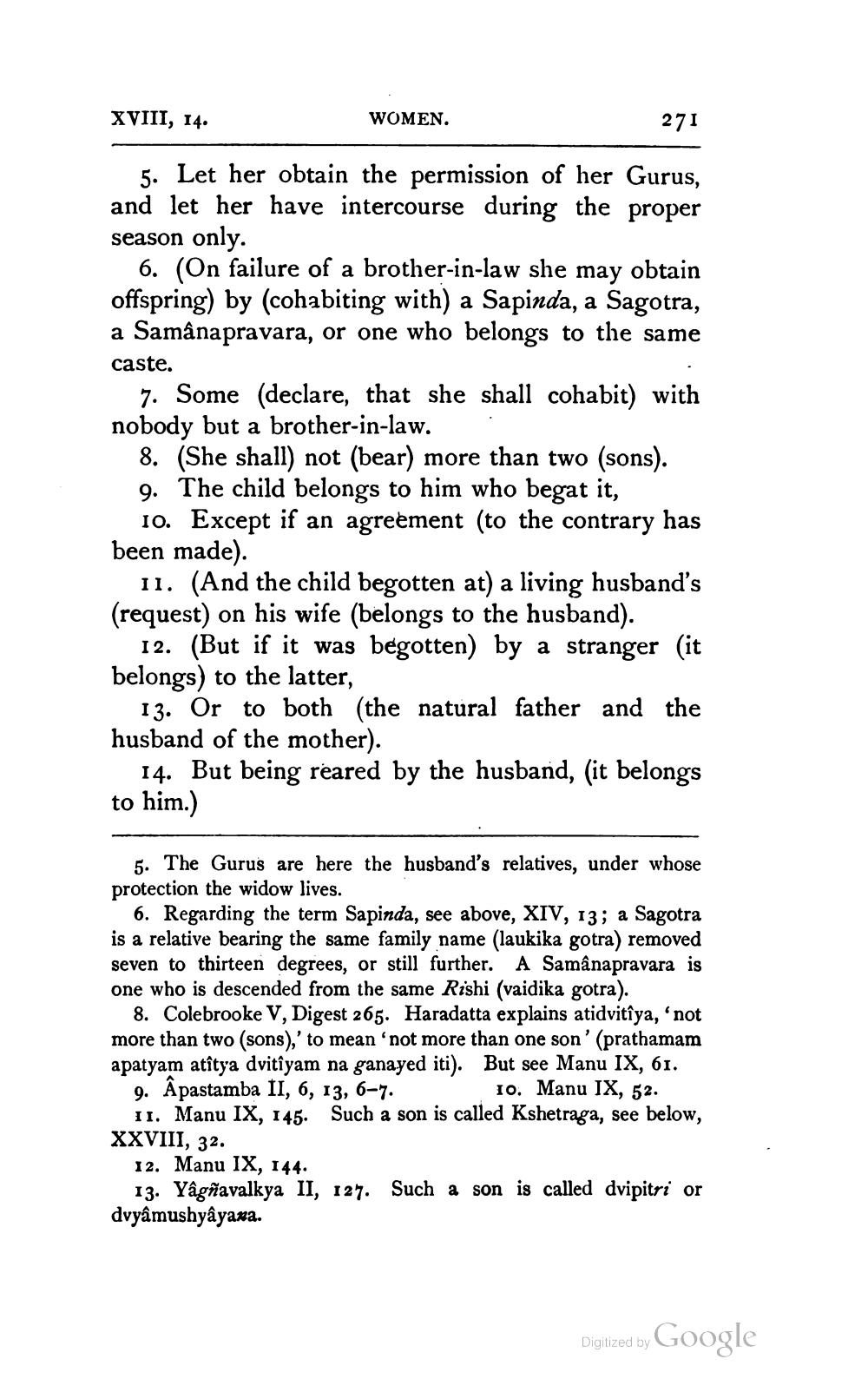________________
XVIII, 14.
WOMEN.
271
5. Let her obtain the permission of her Gurus, and let her have intercourse during the proper season only.
6. (On failure of a brother-in-law she may obtain offspring) by (cohabiting with) a Sapinda, a Sagotra, a Samânapravara, or one who belongs to the same caste.
7. Some (declare, that she shall cohabit) with nobody but a brother-in-law.
8. (She shall) not (bear) more than two (sons). 9. The child belongs to him who begat it,
10. Except if an agreement (to the contrary has been made).
11. (And the child begotten at) a living husband's (request) on his wife (belongs to the husband).
12. (But if it was begotten) by a stranger (it belongs) to the latter,
13. Or to both (the natural father and the husband of the mother).
14. But being reared by the husband, (it belongs to him.)
5. The Gurus are here the husband's relatives, under whose protection the widow lives.
6. Regarding the term Sapinda, see above, XIV, 13; a Sagotra is a relative bearing the same family name (laukika gotra) removed seven to thirteen degrees, or still further. A Samânapravara is one who is descended from the same Rishi (vaidika gotra).
8. Colebrooke V, Digest 265. Haradatta explains atidvitîya, 'not more than two (sons),' to mean not more than one son' (prathamam apatyam atîtya dvitîyam na ganayed iti). But see Manu IX, 61. 9. Apastamba II, 6, 13, 6-7.
10. Manu IX, 52. 11. Manu IX, 145. Such a son is called Kshetraga, see below, XXVIII, 32.
12. Manu IX, 144.
13. Yâgñavalkya II, 127. Such a son is called dvipitri or dvyâmushyâyana.
Digitized by Google




